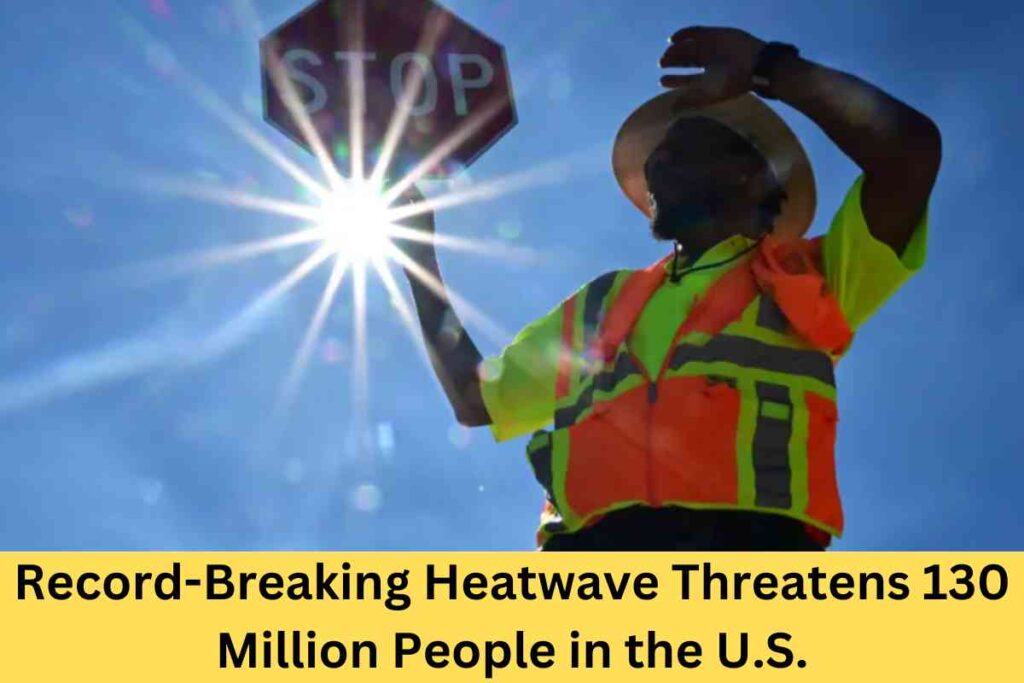Record-Breaking Heatwave Threatens 130 Million People in the U.S.:- The United States is currently facing an unprecedented heatwave, threatening the well-being of over 130 million people across various states. This extreme weather event, characterized by soaring temperatures, poses significant health risks and challenges to infrastructure, agriculture, and daily life.
The Heatwave’s Scope and Impact
Geographic Spread
The heatwave spans a vast area, affecting numerous states from the Southwest to the Northeast. Cities like Phoenix, Las Vegas, Dallas, and New York are experiencing record-breaking temperatures, with some areas reaching well over 110 degrees Fahrenheit.
Also, Read SpaceX’s Starship to Fly Again in Four Weeks, Says Elon Musk
Health Risks
Prolonged exposure to high temperatures can lead to severe health issues, including heat exhaustion, heatstroke, and dehydration. Vulnerable populations, such as the elderly, children, and those with preexisting health conditions, are particularly at risk. Hospitals and emergency services are bracing for an influx of heat-related cases.
Preventive Measures
- Stay Hydrated: Drink plenty of water and avoid alcohol and caffeine.
- Stay Indoors: Limit outdoor activities, especially during peak heat hours.
- Use Air Conditioning: Utilize air-conditioned spaces to stay cool.
- Check on Vulnerable Individuals: Ensure that elderly neighbours and family members are safe.
Impact on Infrastructure
The extreme heat is straining the country’s infrastructure, with power grids experiencing unprecedented demand. Rolling blackouts and power outages have been reported in several areas. Roads and railways are also vulnerable, with asphalt and metal components expanding and buckling under intense heat.
Agricultural Consequences
Farmers are facing significant challenges as crops wither and livestock suffer. Water shortages are exacerbating the situation, leading to reduced yields and threatening food supply chains. States reliant on agriculture are particularly concerned about the long-term economic impact.
Details of the Current Heatwave
Record-Breaking Temperatures
- Phoenix, Arizona: Reached an all-time high of 120 degrees Fahrenheit.
- Las Vegas, Nevada: Temperatures soared to 117 degrees Fahrenheit.
- Dallas, Texas: Experienced consecutive days above 110 degrees Fahrenheit.
- New York, New York: Recorded its highest July temperature at 104 degrees Fahrenheit.
Response and Preparedness
Local and state governments are mobilizing resources to help residents cope with the heat. Cooling centres are being established, and public service announcements are being broadcasted to inform people about safety measures.
Government Initiatives
- Emergency Services: Increasing staffing and resources to handle heat-related emergencies.
- Cooling Centers: Setting up air-conditioned spaces in public buildings for those without access to cooling at home.
- Public Awareness Campaigns: Disseminating information about the dangers of heat and how to stay safe.
Climate Change Connection
Scientists emphasize that the increasing frequency and severity of heatwaves are linked to climate change. The current heatwave serves as a stark reminder of the urgent need to address global warming through concerted international efforts.
Frequently Asked Questions (FAQs): Record-Breaking Heatwave Threatens 130 Million People in the U.S.
Question 1:- What causes heatwaves?
Heatwaves are typically caused by high-pressure systems that trap warm air in a region. Climate change has intensified these events, making them more frequent and severe.
Question 2:- How long will the current heatwave last?
Meteorologists predict that the current heatwave could last for several weeks, with temperatures gradually decreasing as weather patterns shift.
Question 3:- What can individuals do to stay safe during a heatwave?
Stay hydrated, avoid strenuous outdoor activities, use air conditioning, and check on vulnerable individuals. Wearing light, loose-fitting clothing can also help manage body temperature.
Question 4:- How can communities support each other during a heatwave?
Communities can set up cooling centres, distribute water, and check on vulnerable neighbours. Public awareness campaigns can inform people about the dangers of heat waves and how to stay safe.
Question 5:- What are the long-term solutions to mitigate the impact of heat waves?
Long-term solutions include investing in resilient infrastructure, improving urban planning to reduce heat islands, and addressing climate change through sustainable practices and policies.
Follow Us on Facebook at NewUSANews
Conclusion: Record-Breaking Heatwave Threatens 130 Million People in the U.S.
The record-breaking heatwave gripping the United States highlights the growing challenge of extreme weather events in a changing climate. With over 130 million people at risk, individuals, communities, and governments must take proactive measures to ensure safety and resilience. As we navigate this crisis, the importance of long-term solutions to mitigate the impacts of climate change becomes ever more apparent. By investing in infrastructure, public health, and sustainable practices, we can better prepare for and respond to future heatwaves, protecting lives and livelihoods.

